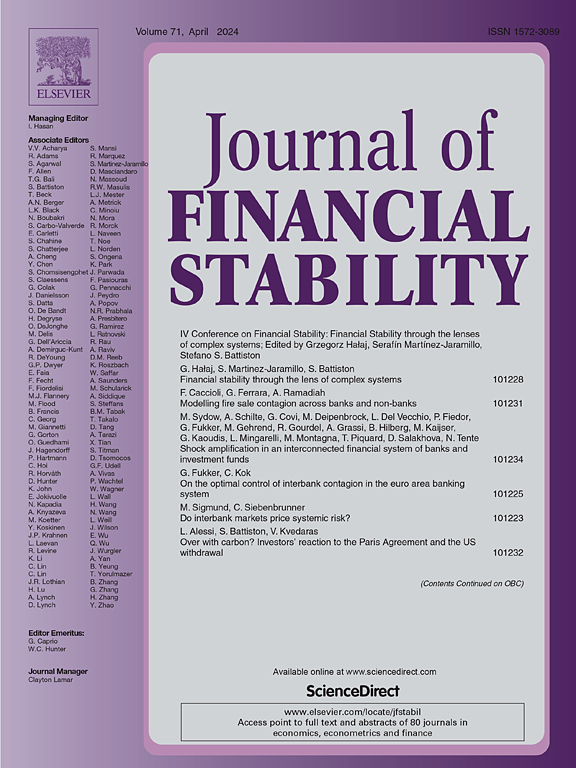Analyzing and forecasting China's financial resilience: Measurement techniques and identification of key influencing factors
IF 4.2
2区 经济学
Q1 BUSINESS, FINANCE
引用次数: 0
Abstract
This paper measures China's financial resilience from the perspective of external risk shocks and analyzes its influencing factors for forecasting. First, we introduce an innovative financial resilience model comprising three submodels: the dynamic factor model, the TVP-VAR model, and a resilience characteristic measurement model that captures resistance and recoverability through absorption intensity and absorption duration. The results show a clear inverse relationship between absorption intensity and absorption duration, with resilience fluctuations exhibiting distinct phase characteristics. Notably, intervals of low resilience often correspond to specific risk events. Second, we apply the Lasso-logistic model for recursive estimation and forecasting financial resilience, while comparing its performance to that of the Logistic regression model. The results indicate that the Lasso-logistic model achieves, on average, a 10 % higher forecasting accuracy than the Logistic model does. Among the most important features identified by the model are macroeconomic and public expectation variables. The analysis shows that the stability of economic fundamentals and market participants' confidence in the future play pivotal roles in strengthening financial resilience and ensuring the stability of the financial system.
中国金融弹性分析与预测:测量技术与关键影响因素识别
本文从外部风险冲击的角度对中国金融弹性进行测度,并分析其影响因素进行预测。首先,我们引入了一个创新的金融弹性模型,该模型包括三个子模型:动态因子模型、tpv - var模型和通过吸收强度和吸收持续时间捕捉抵抗力和可恢复性的弹性特征测量模型。结果表明,吸收强度与吸收持续时间呈明显的反比关系,弹性波动表现出明显的相位特征。值得注意的是,低弹性的间隔通常对应于特定的风险事件。其次,我们应用Lasso-logistic模型进行金融弹性递归估计和预测,并将其与Logistic回归模型的性能进行比较。结果表明,Lasso-logistic模型的预测精度平均比Logistic模型高10 %。该模型确定的最重要特征是宏观经济变量和公众期望变量。分析表明,经济基本面的稳定和市场参与者对未来的信心对增强金融韧性和确保金融体系稳定起着举足轻重的作用。
本文章由计算机程序翻译,如有差异,请以英文原文为准。
求助全文
约1分钟内获得全文
求助全文
来源期刊

Journal of Financial Stability
Multiple-
CiteScore
7.70
自引率
9.30%
发文量
78
审稿时长
34 days
期刊介绍:
The Journal of Financial Stability provides an international forum for rigorous theoretical and empirical macro and micro economic and financial analysis of the causes, management, resolution and preventions of financial crises, including banking, securities market, payments and currency crises. The primary focus is on applied research that would be useful in affecting public policy with respect to financial stability. Thus, the Journal seeks to promote interaction among researchers, policy-makers and practitioners to identify potential risks to financial stability and develop means for preventing, mitigating or managing these risks both within and across countries.
 求助内容:
求助内容: 应助结果提醒方式:
应助结果提醒方式:


